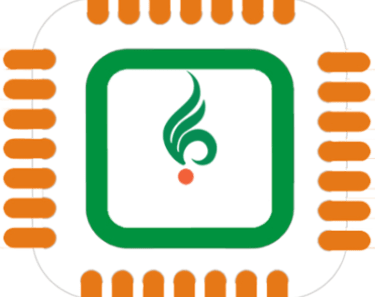Future-Proofing Edge AI with Cadence NeuroEdge
Discover how Cadence’s NeuroEdge Co-Processor offers a scalable, programmable solution to support evolving AI workloads at the edge, ensuring long-term hardware relevance and performance.
6/16/20253 min read


A Novel Approach to Future-Proofing AI Hardware for the Edge
In the race to build smarter, more capable devices at the edge, AI acceleration is no longer optional—it’s essential. From autonomous vehicles to medical diagnostics and aerospace systems, edge AI demands increasingly powerful computing solutions that can keep pace with rapidly evolving algorithms. But therein lies the problem: hardware doesn’t evolve like software. Once deployed, it is essentially locked in place, even as AI models continue to change dramatically.
This challenge is particularly pronounced in sectors like automotive, where hardware must remain relevant and regulatory-compliant for up to 15 years. The question facing system designers today is not just how to deliver performance now, but how to future-proof AI hardware for the long haul.
Cadence has introduced a compelling answer to this problem: a programmable co-processor architecture that works alongside an edge NPU (Neural Processing Unit) to support both current and emerging AI workloads. The solution is designed to bridge the gap between fixed hardware capabilities and the evolving demands of AI, offering a flexible path forward for embedded and edge system developers.
The Limitations of Fixed AI Hardware
CPUs are ideal for general-purpose computing but fall short in performance and efficiency for the linear algebra workloads that power modern AI models. NPUs, on the other hand, are optimized for exactly these tasks—matrix multiplications, attention mechanisms, and multi-layer perceptrons. But they come with limitations. Most NPUs are not designed to handle nonlinear functions such as custom activations, normalization, or new vector and scalar operations that are increasingly found in evolving AI models.
As AI continues to diversify beyond transformer-based architectures, many operations can no longer be mapped efficiently onto NPUs. A common workaround is to offload these tasks to a host CPU. However, this results in latency and energy penalties—especially when such offloads are frequent. The performance bottleneck can significantly impact real-time applications such as driver-assist systems or smart medical devices.
The Cadence NeuroEdge Solution
To overcome this challenge, Cadence has developed the Tensilica NeuroEdge 130 AI Co-Processor, a fully programmable IP block designed to be tightly coupled with an NPU. This configuration offers both low-latency communication and high flexibility to address operations not natively supported by the NPU.
Unlike traditional CPU offloads, the NeuroEdge Co-Processor is optimized for non-NPU tasks and custom AI operations. It enables developers to embed new functions, including those that haven’t yet been defined in AI model libraries like ONNX. Whether it's a novel fusion algorithm or an agentic workflow, these tasks can be efficiently handled without compromising overall system performance.
The NeuroEdge Co-Processor leverages Cadence's mature Tensilica Vision DSP architecture, streamlined specifically for AI workloads. This results in a 30% reduction in silicon area and 20% lower power consumption for equivalent workloads, without sacrificing performance. It supports rapid application development through the NeuroWeave software stack and connects to NPUs via the NeuroConnect API over AXI or a high-bandwidth direct interface.
Embedded AI Built for Longevity
What makes this architecture particularly valuable is its configurability. Designers can pair the NeuroEdge Co-Processor with virtually any NPU and create a tightly integrated subsystem, potentially with shared memory. In some configurations, the co-processor acts as a support module; in others, particularly in agentic AI systems, it may function as the primary control interface managing the NPU directly.
Furthermore, the solution is ISO26262 Functional Safety (FUSA) ready, making it suitable for safety-critical automotive applications.
Why It Matters
The AI models of today are not the AI models of tomorrow. As the field advances toward more autonomous, adaptive, and intelligent systems, hardware must be prepared to handle unforeseen computational requirements. Building a custom solution that combines DSP functionality and floating-point CPU capabilities is complex and time-consuming, requiring integration, validation, and software ecosystem development.
Cadence’s NeuroEdge Co-Processor presents an alternative: a proven, compact, and programmable AI accelerator that fills in the gaps left by fixed-function NPUs and evolving AI models. It allows companies to hedge against future uncertainty in AI development without compromising on performance, power, or size.
Conclusion
As edge AI pushes into longer product lifecycles and more demanding environments, the ability to adapt becomes a critical differentiator. Cadence’s co-processor approach offers a practical, scalable, and forward-looking way to ensure AI hardware remains relevant and responsive—well into the future.
For companies building AI-enabled systems for automotive, aerospace, industrial, or medical markets, this strategy may be the key to staying competitive in a rapidly changing technological landscape.
Source - Semiwiki
QUICK LINKS
NEIL RAO TOWERS, 117 & 118, Rd Number 3, Vijayanagar, EPIP Zone, Whitefield, Bengaluru, Karnataka 560066
200/2, Tada Kandriga, Tada Mandalam, Tirupati District - 524401
Locations

